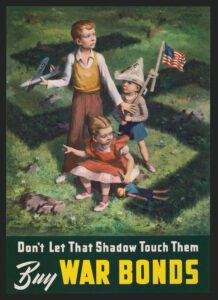Reviewed by Dana Huntley
By Christopher Davies
Houghton Mifflin, New York
“I don’t know what you mean by ‘glory,’” Alice said.
Humpty Dumpty smiled contemptuously. “Of course you don’t — till I tell you. I meant ‘there’s a nice knock-down argument for you!’”
“But ‘glory’ doesn’t mean a ‘nice knock-down argument,’” Alice objected.
“When I use a word,” Humpty Dumpty said, in rather a scornful tone, “it means just what I choose it to mean — neither more nor less.”
It was George Bernard Shaw who putatively observed that Britain and America are two countries divided by a common language. Every tourist guidebook and bit of travel writing is bound sooner or later to comment upon the uncommon language we share. Hood or bonnet, lift or elevator, courgette or zucchini: Everyone with a cursory familiarity of speech on both sides of the pond can easily recall plenteous examples of vocabulary differences between British and American English. Now Christopher Davies has produced as exhaustive a comparison of our common languages as I have seen.
In his readable opening chapters, Davies lightly discusses differences that are often cultural as well as linguistic. He begins with a bit of language history and goes on to compare our varied language in categories ranging from plumbing, cooking, education and transportation to etiquette. He explains to an American audience such things as an airing cupboard and a bungalow, and condominiums to the British. Rather than simply compiling lists of vocabulary differences, Davies annotates and illuminates the language for those who would be truly bilingual.
Many pages, of course, are given to a UK-U.S. lexicon, and vice versa. Unquestionably these vocabulary lists are very useful. On this section, however, Davies’ marks are fair at best. There are a lot of arcane terms and regionalisms included that I’ve never heard on either side of the Atlantic. An Englishman himself, Davies has resided in Florida since 1980. This would be a somewhat different book if he had lived in Boston. Many of the English locutions he cites need no explanation to New England ears. There aren’t many parts of the country, on the other hand, where you’ll hear the expression “cotton pickin’ hands” these days. And when was the last time you heard anyone refer to a sofa or couch as a davenport?
A nice feature of Davies’ dance with our language is the inclusion of brief lexicons that introduce the idiosyncrasies of New Zealand, Canadian, Australian and South African English as well as a bit on Cockney rhyming slang (which has been heard in the East End of London since the 16th century).
This is a book for lovers of words. It is a lot of fun. In truth, the greater familiarity one has with “comparative English” the weaker and more provincial Davies’ offering will appear. Still, even old hands at transatlantic English will make new discoveries in the use of our Mother Tongue. It is amazing how many euphemistic and slang synonyms for being drunk exist in both countries.
At the end of the day, vocabulary differences do not amount to very much. Vocabulary is the most mutable and adaptive element of language. Our visit with Dr. Johnson’s dictionary in the last BH issue certainly illustrated that point. No, British and American English remain very much a single tongue, and are likely to remain one, particularly in view of the instant global communication we enjoy in the 21st century. As long as we continue to conjugate our verbs the same way, differences in accent and vocabulary are ephemeral. After all, here in the States we may not eat a Christmas pudding, but we know what it means.




